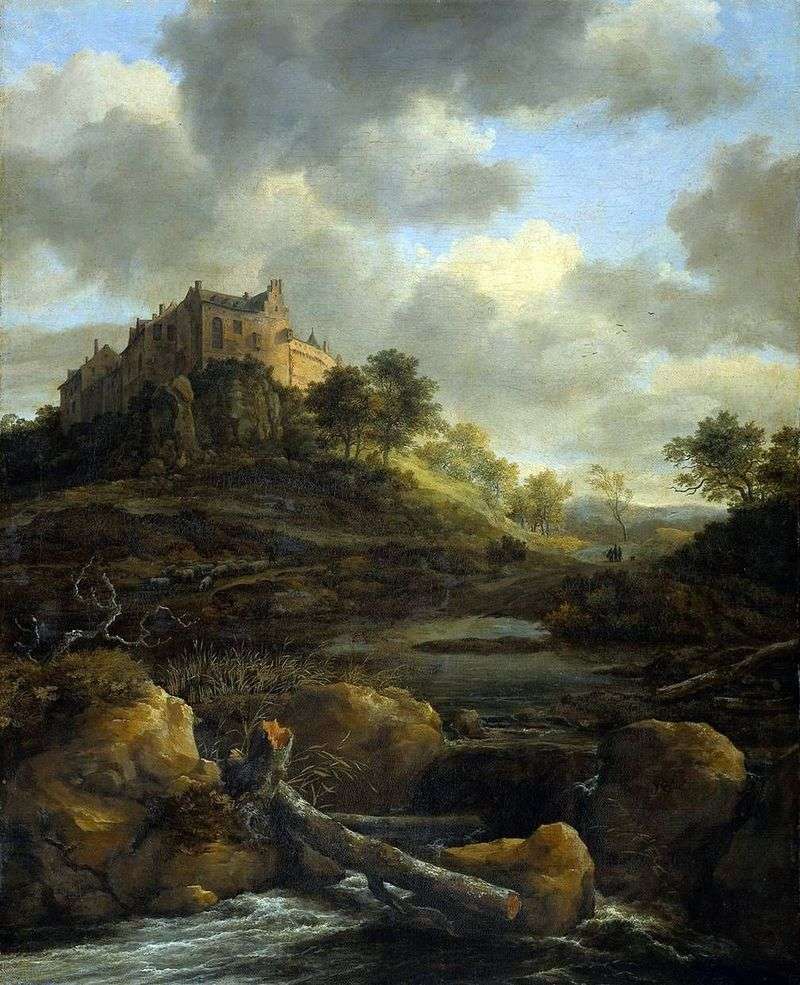
Approximately in 1650, Reisdal left his native Haarlem and went on a trip to the border German lands. Most likely, his friend, landscape painter Claes Berchem, accompanied him on this journey.
Later, both artists, using the sketches made during the trip, wrote views with the Bentheim castle, which was at that time almost at the very border with Holland. Apparently, the castle made a very strong impression on the Ruysdael, for he subsequently painted it on a dozen canvases. Maybe the Bentheim Castles were more, but only twelve reached us.
Art critics agree that this landscape, written in 1653, is one of Reisdal’s best works. It is believed that the picture was painted by Reisdal for the owner of the castle, Count Bentheim, and for a long time belonged to his family. The story with the count order is not documented, and it can be classified as guesswork and conjecture, which the artist’s biography is so rich with. Berchem and Reisdal portrayed the castle of Bentheim in completely different ways.
Berchem showed the castle from afar, making it seem airy and fabulous. In the picture of Reysdal, the majestic building is placed close enough to the viewer – so that you can even make out some of its details and architectural features. It is curious that in fact the castle stands on a rather gentle hill, on the slopes of which there is no hint of the forest. Reysdal almost completely transformed and, if I may say so, “poetized” the surrounding landscape.
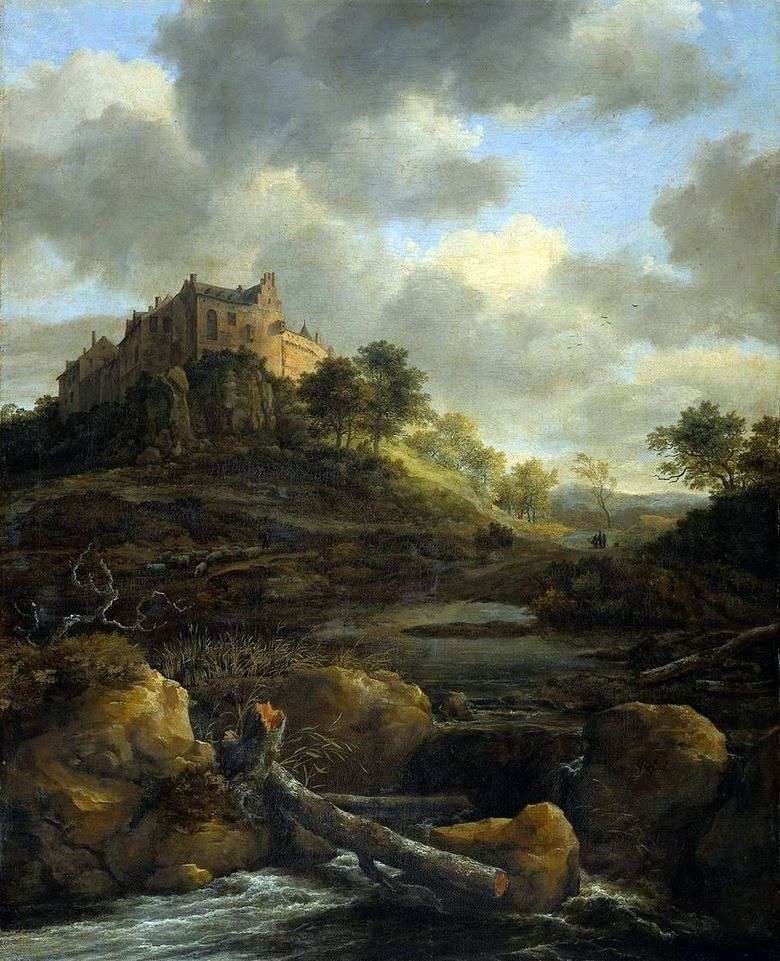 Castillo de Bentheim – Jacob van Ruisdal
Castillo de Bentheim – Jacob van Ruisdal Château de Bentheim – Jacob van Reisdal
Château de Bentheim – Jacob van Reisdal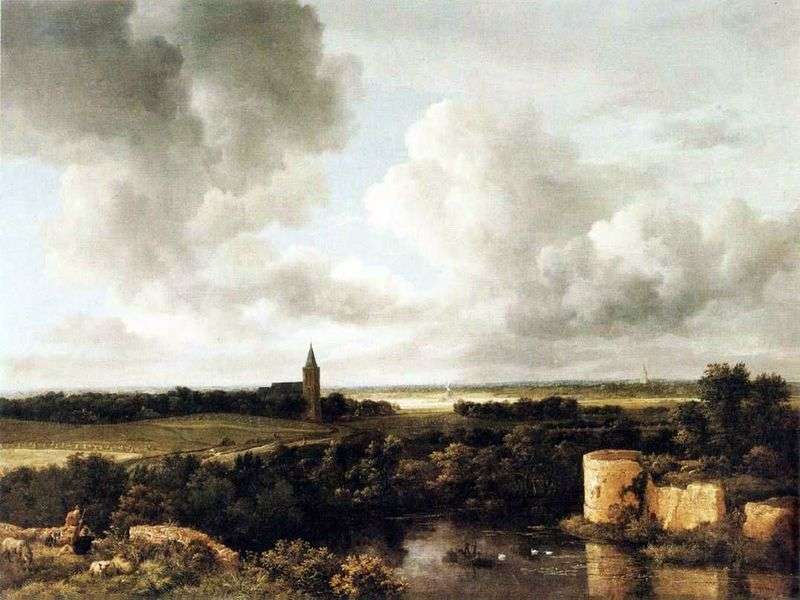 Landscape with castle ruins and church by Jacob van Reisdal
Landscape with castle ruins and church by Jacob van Reisdal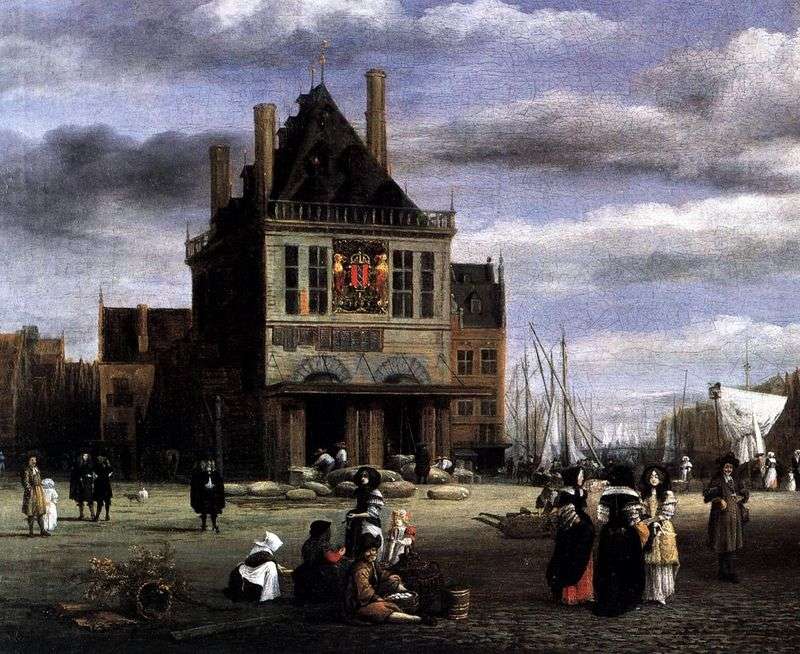 Square in Amsterdam by Jacob van Ruisdal
Square in Amsterdam by Jacob van Ruisdal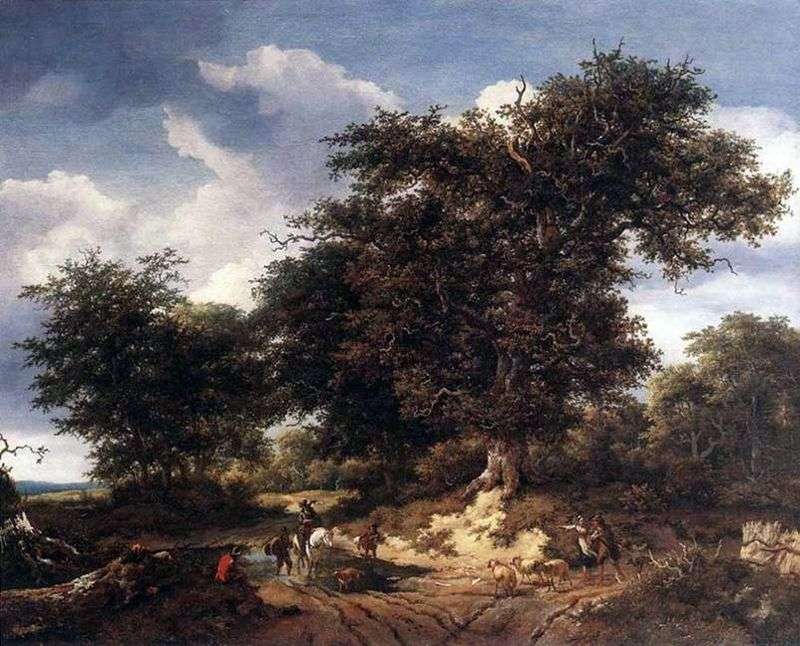 Big Oak by Jacob van Ruysdael
Big Oak by Jacob van Ruysdael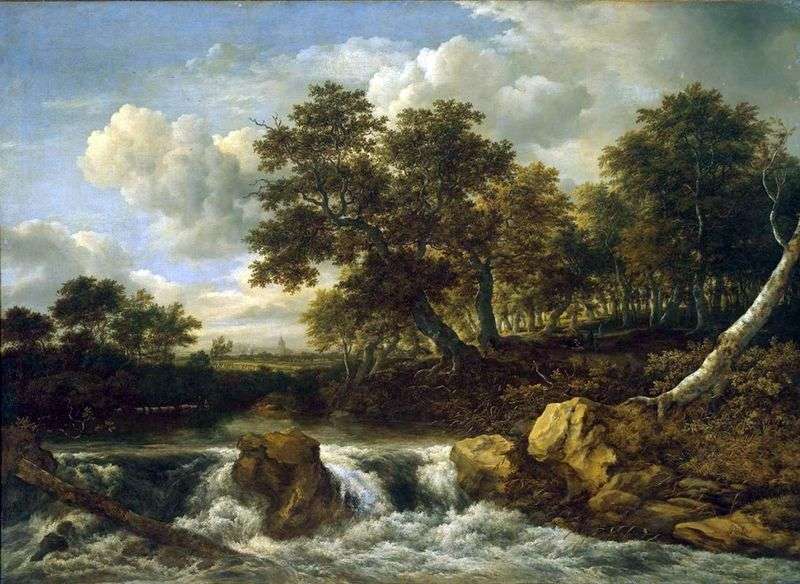 Landscape with a waterfall by Jacob van Ruisdal
Landscape with a waterfall by Jacob van Ruisdal Dune Road by Jacob van Ruisdal
Dune Road by Jacob van Ruisdal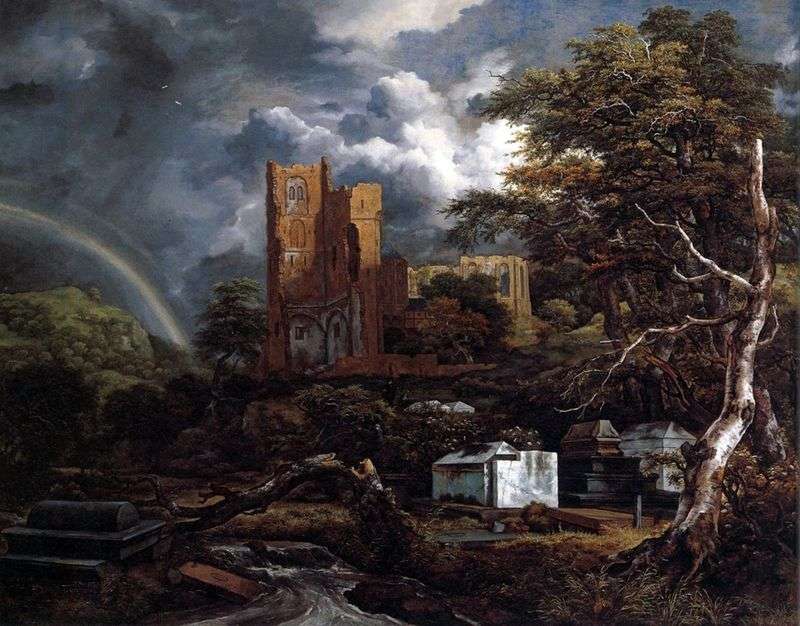 Jewish cemetery by Jacob van Ruisdal
Jewish cemetery by Jacob van Ruisdal